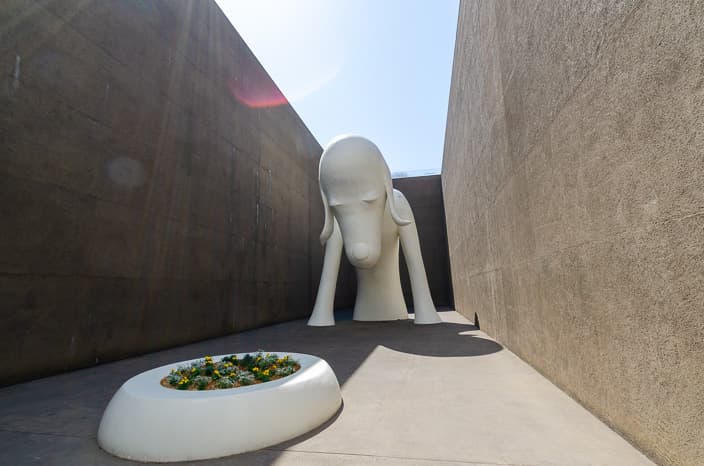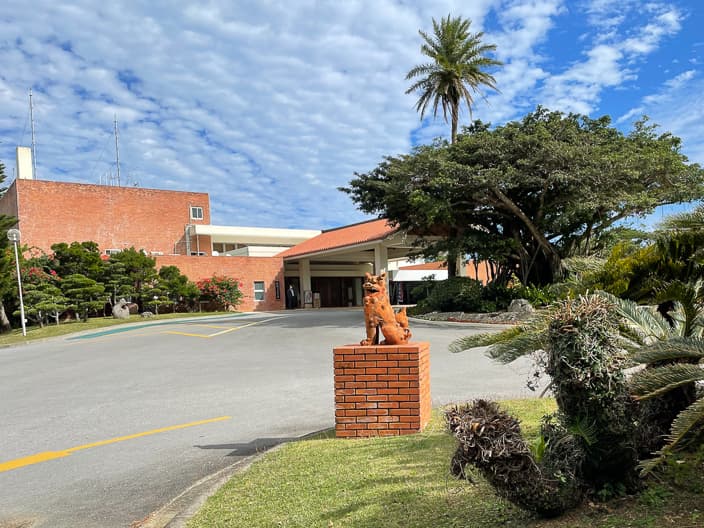Today, I would like to introduce the Aomori Museum of Art, opened in 2006. It exhibits works by Aomori-related artists such as Yoshitomo Nara, Shiko Munakata, and Toru Narita. The museum itself is an attraction, not only for its exhibits, but also for the attention to detail in its architecture and design.
Located about 10 minutes by bus from Shin-Aomori, the terminal station of the Tohoku Shinkansen Line, The museum was designed by Jun Aoki, an architect famous for many Louis Vuitton stores in New York’s Fifth Avenue, Ginza Namiki-dori, Osaka and etc.
He was inspired by the excavation site of the Sannai-Maruyama Ruins (Jomon Ruins), which stands next to the museum. The building has a geometric cut in the ground like a trench, and white bricks covering it. It is a unique space where the white cube and the earth coexist in opposition, a fusion of the ancient Jomon era and the modern.
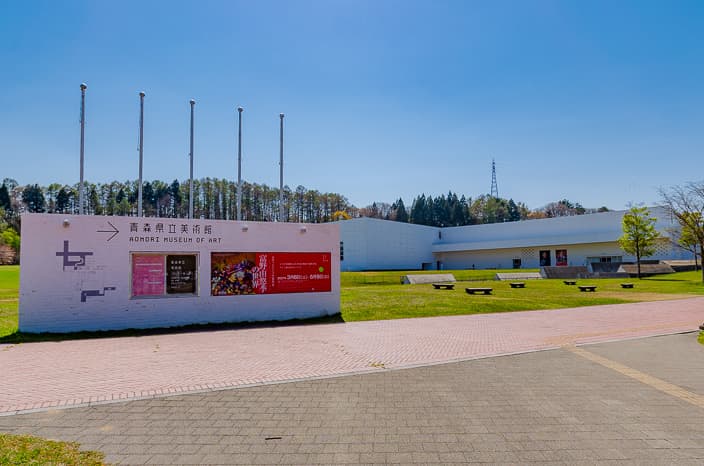
The designer, Atsuki Kikuchi, was in charge of the unified symbol mark and signage of the museum.
At the entrance, there is a row of tree symbols, which glow blue at dusk to represent “Aomori”.
Indeed, in Japanese, “ao” means “blue” and “mori” means “forest”. So this is like a blue forest glowing in the night. It’s quite poetic, don’t you think?
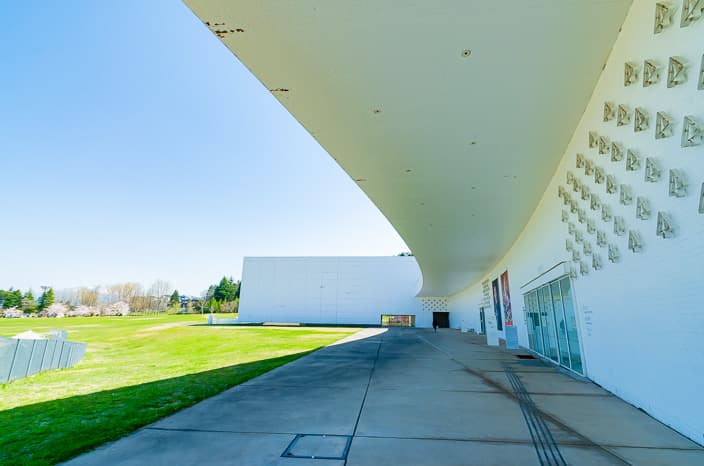
Let’s go inside the museum. After purchasing a ticket for the permanent exhibition, we took the elevator down to the basement. We started our tour from the large 20-meter high Areko Hall. Here, you can see the backdrops of the ballet “Areko” by master Marc Chagall (1887-1985). Chagall, who was born into a Jewish family, was commissioned to create these backdrops by the American Ballet Theatre, which he defected to, in order to escape persecution by Nazi Germany during World War II.
The 9m x 15m sized background painting is very impressive. I had never seen any of Chagall’s paintings before, but the one of the white horse gave me a sense of déjà vu… I wondered why, and found that it looked a bit like the painting by Ursula (the painter girl that Kiki met) from Studio Ghibli’s “Kiki’s Delivery Service”. The connection to Ghibli, which I had watched since I was a child, made me feel closer to Chagall.
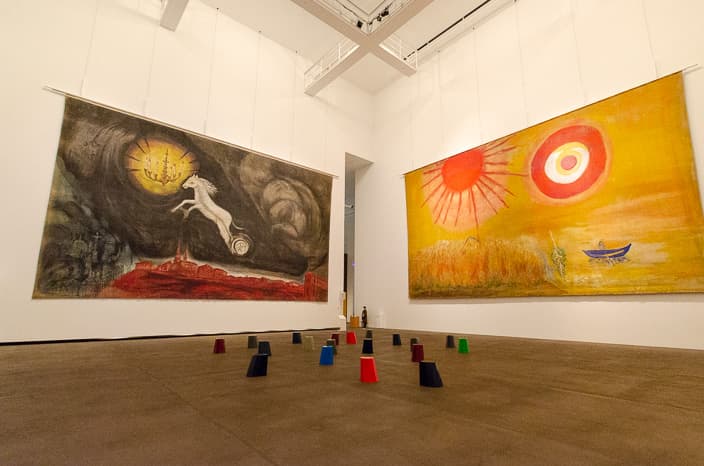
After passing through the impactful Areko Hall, you will find works by some of Aomori’s proudest artists.
Particularly impressive were the works of Toru Narita, who designed Ultraman (a famous Japanese “super-hero” from the 1980’s ) and Ultraman monsters, of Shiko Munakata, a printmaker and Nara Yoshitomo, the world’s most famous Japanese contemporary artist.
Works by other artists from Aomori were also wonderful and I was amazed how many talented people there are in Aomori. (*Photography is not allowed in the exhibition rooms, except for some parts, so I could only take a few pictures).
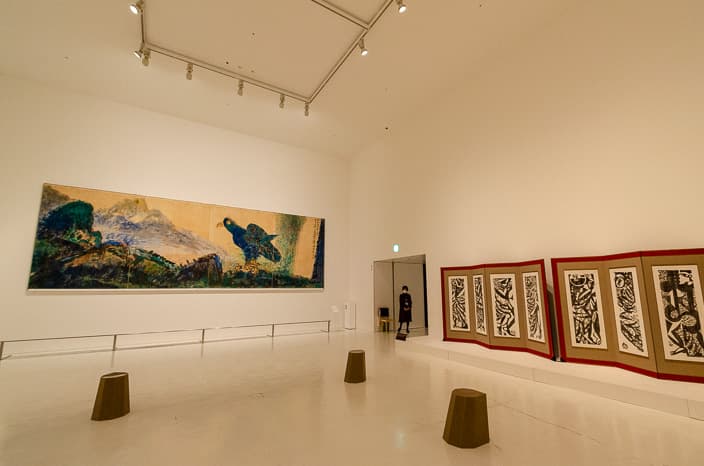
By the way, the Shiko Munakata Memorial Museum of Art in Aomori City exhibits more of Shiko Munakata’s works, so if you are interested in this place, please visit it.
Also, there are also some must-see works outside the exhibition room. This is the main reason why I visited the Aomori Museum of Art.
Aomori-ken (The Dog) / Yoshitomo Nara(2005)
The symbol of the Aomori Museum of Art is the “Aomori-ken (The Dog)” by Yoshitomo Nara, which was completed at the same time as the museum opened. It can be viewed from the room where the works of Yoshitomo Nara are displayed, as well as through a passage outside the museum, on the way to the Aomori-ken, where you will be able to view it more closely.
The 8.5 meter high work is made of reinforced concrete and the outside is made of mortar and resin, and took about a year to make. It’s really quite impressive when seen from close-up!
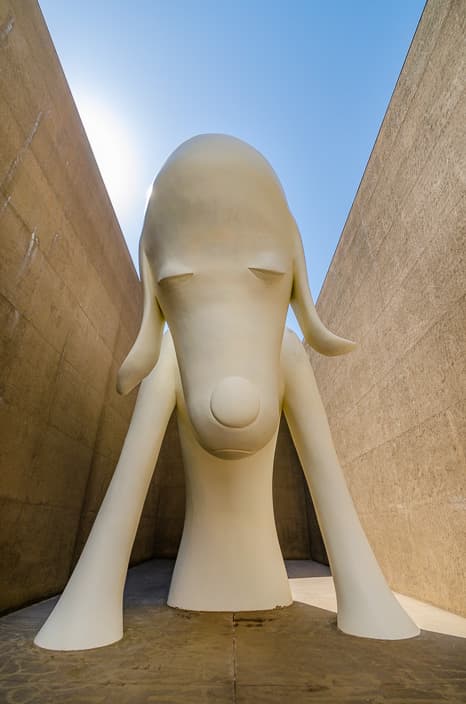
By the way, is there anything strange about this work? That’s right, the Aomori-ken has only the upper half of its body.
As mentioned above, the Aomori Museum of Art was inspired by the “excavation site of Jomon ruins,” and this also applies to the location of the Aomori-ken. The earthen walls on either side of the Aomori-ken look like the excavation site of a ruin, and the Aomori-ken represents a scene where the dog has just been discovered and its upper body has been dug out. In other words, the story behind the Aomori-ken is that it has been here for a long time and was dug out when the museum opened. I feel that this shows Yoshitomo Nara’s desire to “take pride in the culture that originally existed in this area.
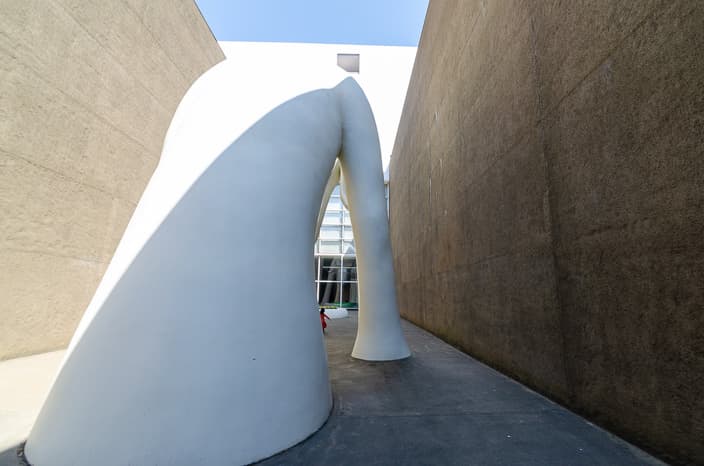
Miss Forest / Yoshitomo Nara(2016)
Standing in the middle of the octagonal hall (Hakkakudo) on the south side of the museum is “Miss Forest”. It has the same shape as the one in the garden of N’s Yard in Nasu (Tochigi Prefecture), but this one is slightly larger (about 6 meters high).
The production of the artwork started after the Great East Japan Earthquake, and he says that he reached the completion of the artwork while having various thoughts about his creation due to the effects of the earthquake.
I had seen the same type of work at N’s Yard, but I felt the atmosphere changed when I looked at it from a different place… N’s Yard is standing in a place where plants and flowers are blooming, and it seems to be living in harmony with plants and birds. The one in the octagonal hall (Hakkakudo) seems to somehow govern the earth…. I wonder if it’s because it’s surrounded and you can see the sky. Anyway, it was a discovery to me that even though they are the same work of art, the way you feel them differs depending on where you place them.
[related id=1334 label=” About N’s Yard, please read this article”]
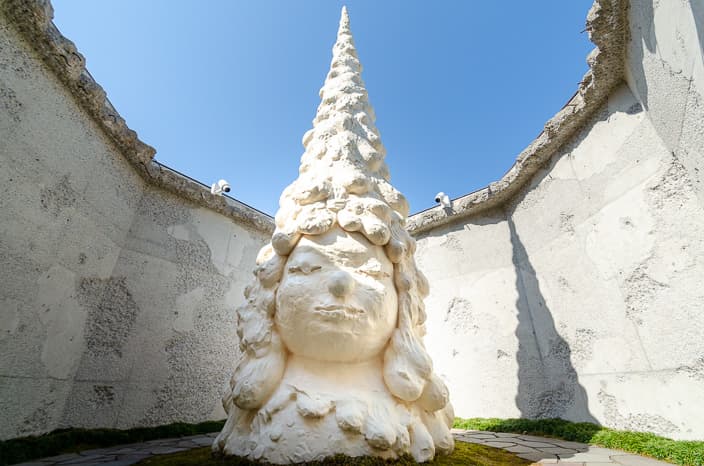
Oh, but now that I’m looking at this photo, it looks so cute, like a bamboo shoot growing out of the ground.
How does it feel to you? To know the answer, please visit and see for yourself ♪
Aomori Museum of Art
| Address | 185 Yasuta Chikano, Aomori-shi, AOMORI |
| TEL | 017-783-3000 |
| Open Hour | 9:30 – 17:00 (Last entry at 16:30) |
| Close | The 2nd and 4th Mondays (If it’s National Holiday, the next Tuesday is closed instead) New Year Holidays Irregularly close during the temporary exhibitions. |
| Admission Fee | < Permanent Exhibition > 【Adult】500 yen 【High school and college student】300 yen 【Elementary and junior high school student】100 yen |
| Website | http://www.aomori-museum.jp/en/ |

